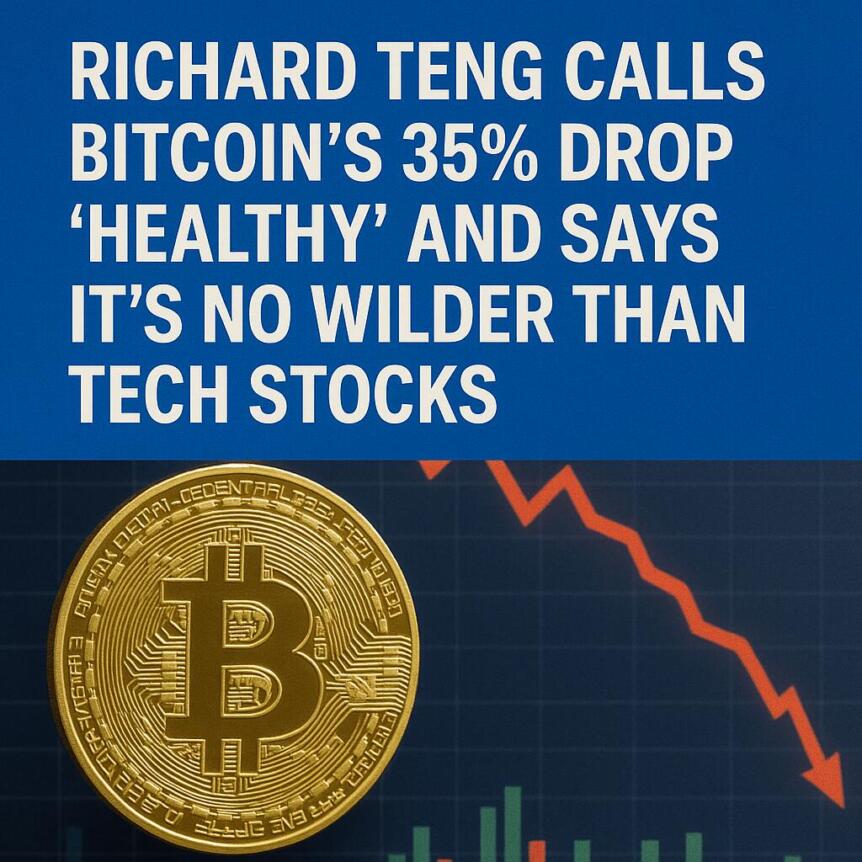Binance chief executive Richard Teng told Reuters that the recent Bitcoin decline is a sign of the unique instability in cryptocurrency, insisting the asset’s volatility now closely tracks broader financial markets.
Teng mentioned that the increased deleveraging and a global risk-off mood are the primary drivers of the sell-off, adding that Bitcoin is still more than double its price from the beginning of 2024. He described the current correction as “healthy consolidation” that clears excess leverage and sets the stage for sustainable growth.
As of November 21, 2025, Bitcoin traded at approximately $82,414, a 34.3% decline from an all-time high of $126,198, on October 6, 2025. The total crypto market capitalization has fallen by 33.8% from its peak of $4.28 trillion to $2.83 trillion, according to CoinMarketCap data.
A key element of Teng’s argument is Bitcoin’s volatility profile. The asset’s 30-day realized annualized volatility is currently between 52% and 58%, a dip from its 2013 peak of 181% and its 2025 low near 23%.
While still above the S&P 500’s current approximately 16%, Bitcoin notably has lower volatility compared to several top growth stocks in the United States, including Tesla at 66% to 68%, AMD at 73–75%, Super Micro Computer currently at 74–78%, and Palantir between 62% and 65%.
During two brief moments of intense market stress this year, in early August and late October, the S&P 500’s short-term, or 20-day, realized volatility actually surpassed Bitcoin’s for a few trading sessions, a very unusual occurrence that market participants cite as evidence of growing macro correlation.
Teng and top market analysts argue that deeper liquidity, institutional participation, and the maturation of regulated products such as spot Bitcoin ETFs are in line with Bitcoin’s risk profile with that of innovative growth stocks, rather than the wild swings of its earlier years.
Although the correction has triggered billions of dollars in liquidations across perpetual futures markets, industry sources largely see the move as a conventional risk-off episode rather than a sign of systemic distress in digital assets.



